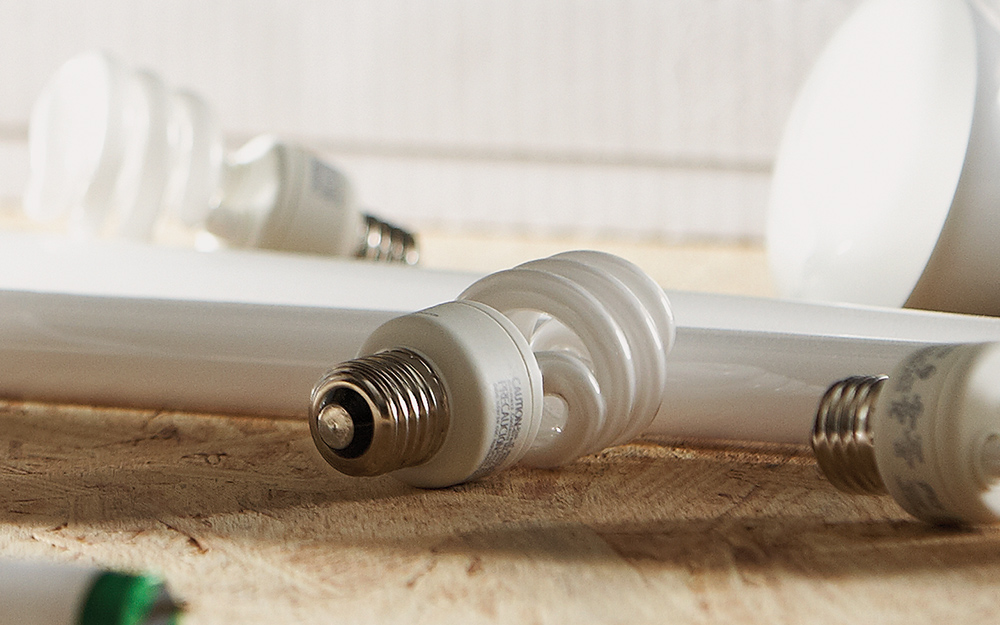
Incandescent light bulbs typically do not contain toxic chemicals, so you can throw them away with your regular trash. You do, however, need to be careful of glass shards, just as would when throwing away any other glass objects.
The EPA recommends that you bring old CFLs to qualified recyclers, rather than disposing of them in trash cans or curbside recycling bins.
Fluorescent Lights
Filled with mercury vapor that produces light by converting UV rays with fluorescent coating into visible light, fluorescent lights are available in two designs: tube lights and CFL.
Here are the features and benefits of fluorescent lighting:
- Fluorescent tube lights vary in length and will not work without a ballast. The ballast stabilizes the light, may require more time to heat up and will also flicker or shake if not balanced. Tube lights are generally used in commercial buildings, warehouses and schools.
- CFL, or compact fluorescent light, is smaller, efficient and can last about 10,0000 hours. Their lifespan reduces when frequently switched on and off. CFL light bulbs last up to 10 times longer and use up to 75 percent less energy than traditional incandescent light bulbs.
- CFL bulbs are commonly characterized by their popular, spiral-shaped design and emit a softer glow. They contain small amounts of mercury and can take a while to warm up to full brightness. As a result, they use minimal amounts of electricity.
Properly disposing of LED vs fluorescent bulbs comes down to keeping the mercury contained. CFLs typically contain 4 mg of mercury.
- As long as the bulb is intact, the mercury is safely contained. Avoid contact with a broken bulb.
- If you break a CFL, air out the room for 15 minutes. Approach the cleanup carefully, following the Environmental Protection Agency’srecommended procedure.
- The EPA recommends that you bring old CFLs to qualified recyclers, rather than disposing of them in trash cans or curbside recycling bins.
You can bring old CFLs to The Home Depot for free recycling. Visit the Eco Options website to learn more. - If you’re concerned about the mercury content in CFLs, consider LED bulbs. One of many LED advantages is that they don’t contain mercury and do not have the same cleanup constraints. They are just as energy-efficient.